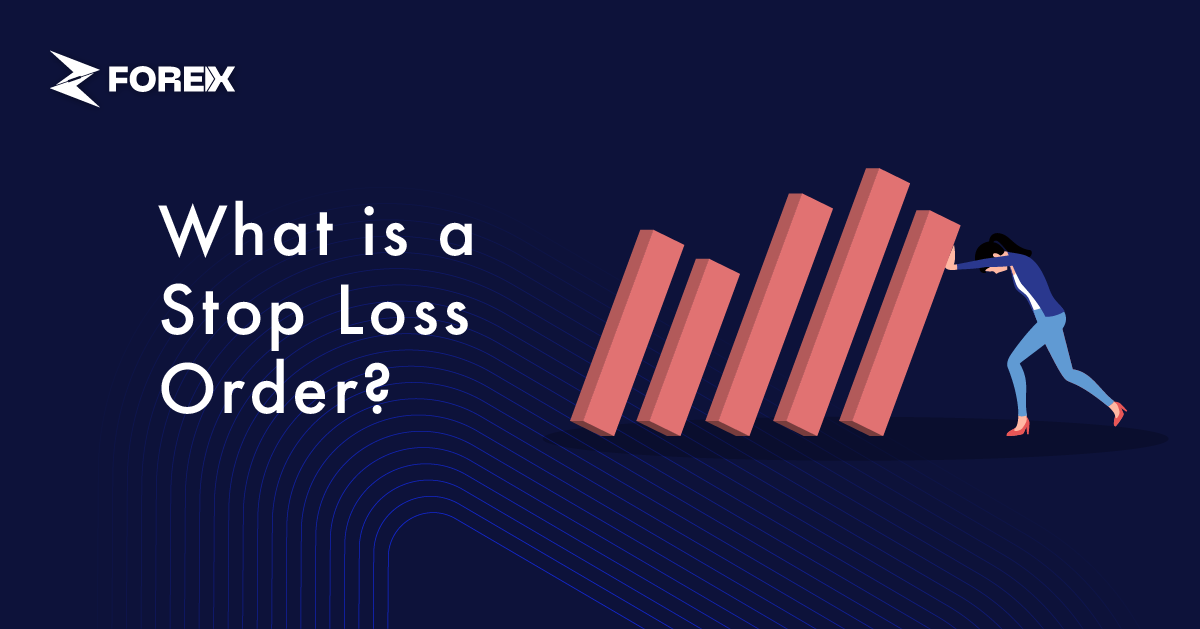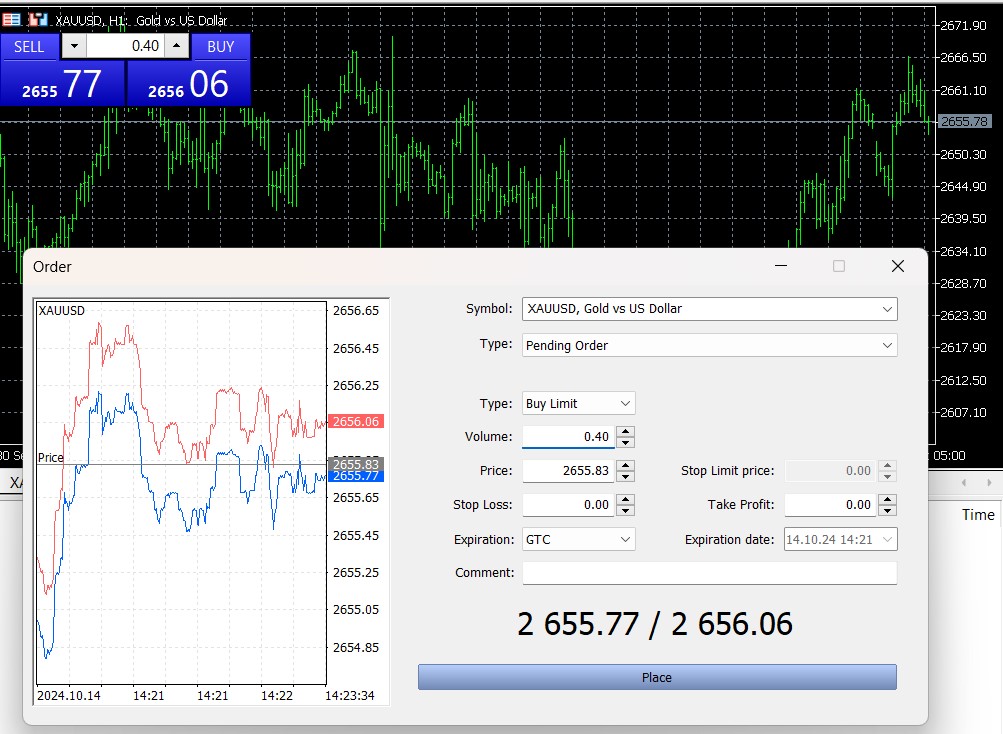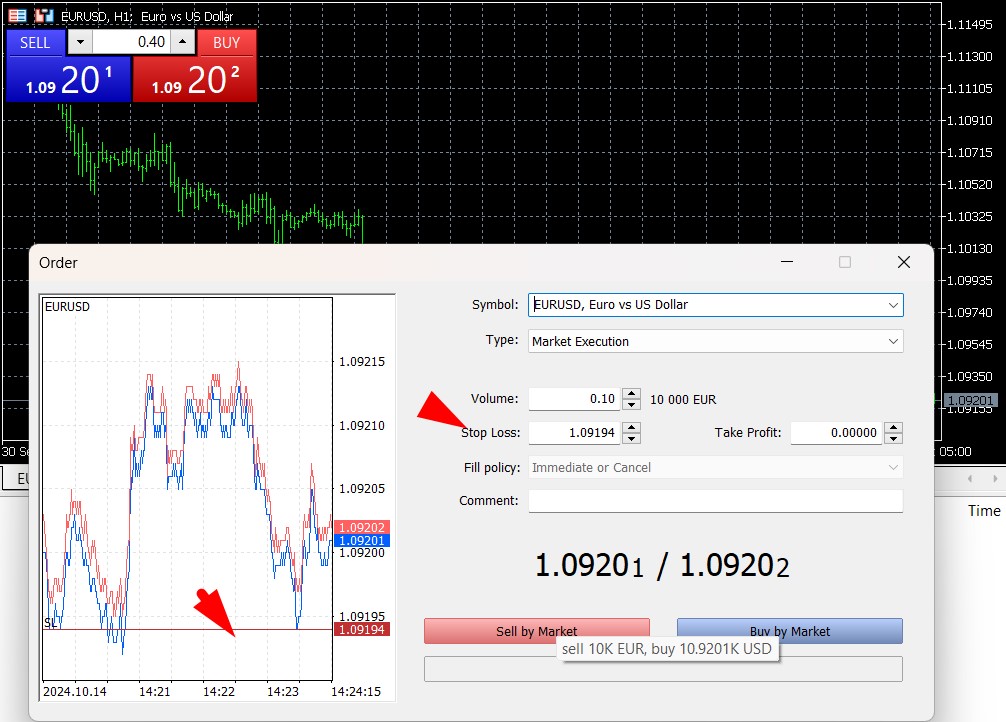
Stop loss is one of the most effective tools that many traders use in portfolio management. Making a profit while trading in the financial markets is a common goal of every trader. However, due to the uncertain and volatile nature of the markets, it is also necessary to minimize risks.
This is where the concept of stop loss, one of the strategies that investors use for successful portfolio management, comes into play.
Let's explore how you can use this strategy by focusing on the details of what stop loss is, what it does and how it works.
A stop-loss order helps traders manage their risks by automatically selling an asset when it reaches a certain price. This helps prevent bigger losses, especially when the market moves unexpectedly.
For example, let’s say an investor buys a stock at 100 units. If the investor sets a stop-loss at 90 units, the stock will be sold automatically if the price drops to 90. This way, the investor avoids further losses.
This strategy helps investors make fewer emotional decisions. Sudden price changes or news can lead to panic, but a stop-loss order automatically manages the sale, reducing the impact of emotional reactions.
Since the order is executed automatically, stop loss is based on a very simple logic. The trader sets a loss level that suits their risk tolerance. When the loss level is reached, the order is automatically activated, and the stock is sold. In this way, losses are minimized automatically with less room for mistakes.
Stop loss offers a disciplined strategy by eliminating the need to react to sudden market fluctuations or news. The trader does not have to constantly track the market and can trade automatically according to the rules they set.
The logic of the stop-loss order can be better explained by the following example;
Let’s say a trader buys a stock of company X at 50 units. As uncertainties arise in the market after the purchase, the trader starts to worry about an unexpected drop in value and decides to use the stop loss strategy.
With the current value of the stock at 50 units, the trader sets the stop loss to 48 units to minimize his loss. This means that if the value of the stock drops to 48 units, a sell will automatically be put in action. This allows the investor to limit their loss before the stock's value drops further.
You can see how simple it is to set up a stop loss order in MetaTrader 5 while trading gold.

You can see how simple it is to set up a stop loss order in MetaTrader 5 while trading EURUSD forex pair.

Using stop losses helps traders adopt a disciplined approach. It offers protection by identifying risks on stocks or other assets in advance.
The strategy allows traders to focus on their long-term goals and trade according to predetermined rules, not emotional decisions. This strategy can be considered key to maintaining stability in financial markets and minimizing unexpected losses.
There are many benefits to using stop losses for traders:
Here are some risks of using stop losses:
Advantages of Stop Loss Orders
Stop loss provides psychological comfort, as traders would not need to make decisions under pressure during volatile times. These orders are also executed automatically, meaning traders do not have to constantly monitor the market.
Stop loss orders can be triggered too early during market volatility, leading to unnecessary sales. This means traders may miss out on potential profit opportunities if the asset price quickly rebounds after being sold.
There is no guarantee that the order will be executed at the exact price set during rapid market changes, slippage can come into play, resulting in a less favorable sale price.
Setting a stop loss level requires careful analysis of the price chart. It is important to identify support and resistance levels by looking at how the asset has performed in the past.
When setting a stop loss, consider not only technical analysis but also market news and economic conditions. Major news or events can sometimes override analysis, so it's important to use both approaches for a more solid approach.
What is an "Up-Stop Loss"?
An up-stop loss is used when an asset's value is rising. It automatically sells once the asset reaches a target set by the trader, helping lock in profits as the market goes up.
What is a "Down-Stop Loss"?
The down-stop loss triggers an automatic sale once the price hits a certain loss level, helping traders manage risk and minimize losses during declines.
What Does It Mean to "Be a Stop"?
To "be a stop" means to have an automatic sell order at a set loss level. This allows traders to manage risk and control the maximum loss they are willing to take.
How do I decide the best level to set my stop loss?
Setting the best stop loss level depends on factors like volatility, support and resistance levels, risk tolerance, and overall market conditions. Proper analysis helps determine a balance between avoiding frequent triggers and managing risk.
What is the difference between a stop loss and a trailing stop loss?
A stop loss sets a fixed level at which an asset will be sold to limit losses, while a trailing stop loss adjusts automatically as the asset's price moves in your favor, helping to secure profits while managing risk.
What is slippage, and how can it affect my stop loss?
Slippage occurs when the execution price of your stop loss order is different from your set price, usually during rapid market movements. This can result in selling at a less favorable price than expected.
Should I use the same stop loss strategy for all my trades?
No, different trading assets and market conditions may require different stop loss strategies. For instance, more volatile assets may need wider stop loss margins to avoid frequent triggering, while stable assets may benefit from tighter stop losses.
What are the limitations of using a stop loss in a fast-moving market?
In fast-moving or low-liquidity markets, the price can move too quickly for the stop loss to execute at the set price, which can lead to slippage and potentially larger losses than expected.
How do support and resistance levels impact where I place my stop loss?
Support and resistance levels are necessary for deciding where to place a stop loss. Setting it below support levels or above resistance levels can help protect from reversals, ensuring a strategic exit if a key level is broken.
Are stop losses useful for all types of assets?
Yes, stop losses are useful across various asset classes, but the effectiveness and placement strategy might differ based on the asset’s volatility, liquidity, and trading environment. For example, highly volatile cryptocurrencies may require wider stop loss levels compared to blue-chip stocks.
 QuickTrade in cTrader: How to Place Trades Faster
QuickTrade in cTrader: How to Place Trades Faster
QuickTrade is a built-in cTrader feature that allows you to place trades directly from the chart, without opening the full order ticket.
Detail A Practical Guide to cBots on cTrader
A Practical Guide to cBots on cTrader
Discover cBots in the cTrader ecosystem, how they are added and used through cTrader Algo, and what to pay attention to when selecting a strategy.
Detail cTrader Shortcuts: 15 Tips to Upgrade Your Experience
cTrader Shortcuts: 15 Tips to Upgrade Your Experience
This guide highlights 15 practical shortcuts and settings that upgrade your cTrader experience.
DetailThen Join Our Telegram Channel and Subscribe Our Trading Signals Newsletter for Free!
Join Us On Telegram!